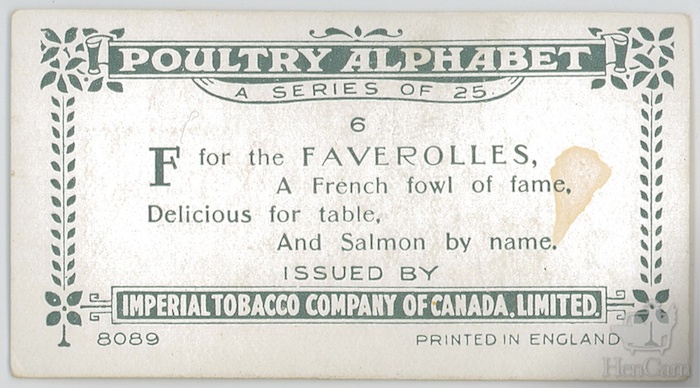I wasn’t familiar with this meat bird, so I looked through my collection of vintage poultry books, and discovered a listing for it in British Poultry, published in 1927, which states that in America it is styled as “Cornish game.” Take a look at how strong this specimen is. It looks like an elongated modern Cornish. The entry in the book says that these birds do best when running in almost a wild state until maturity. And that, if interested in taking to poultry shows, a good specimen, with proper attention, can be used for years. Contrast that with our modern meat bird, that is so breast-heavy that it can no longer mate naturally, and that grows so fast, that if it’s not harvested for meat at under three-months of age, will die before the age of one, anyway. (Imagine the Hulk, bursting forth, but not going on with powerful muscles, but rather collapsing from the transformation.)
This card reminds me of what has happened to many of our domestic breeds. You just have to look at the pug to see where we’ve gone too far breeding for certain traits.
Do any of my UK readers have experience with the Indian? Are they still available? I hope that they are, and that their genetics are being put to good use.












